Cycling in Switzerland is like paradise. Just picture riding through open roads, rolling meadows and the misty mountains of the Swiss Alps. Bet you can almost smell the fresh air and hear the cowbells ringing now.
Thanks to its extensive network, cycling in Switzerland is one of the best ways to explore this part of Europe. And tucked into the southwestern corner of the country, Valais beckons as a high-altitude playground for adventure seekers.
Before you pack your saddlebags, we’ve been working with Swiss Tourism to take a peek at the region’s cycling highlights, from well-marked routes and dramatic climbs to legendary passes and alpine trails – all explorable on two wheels.
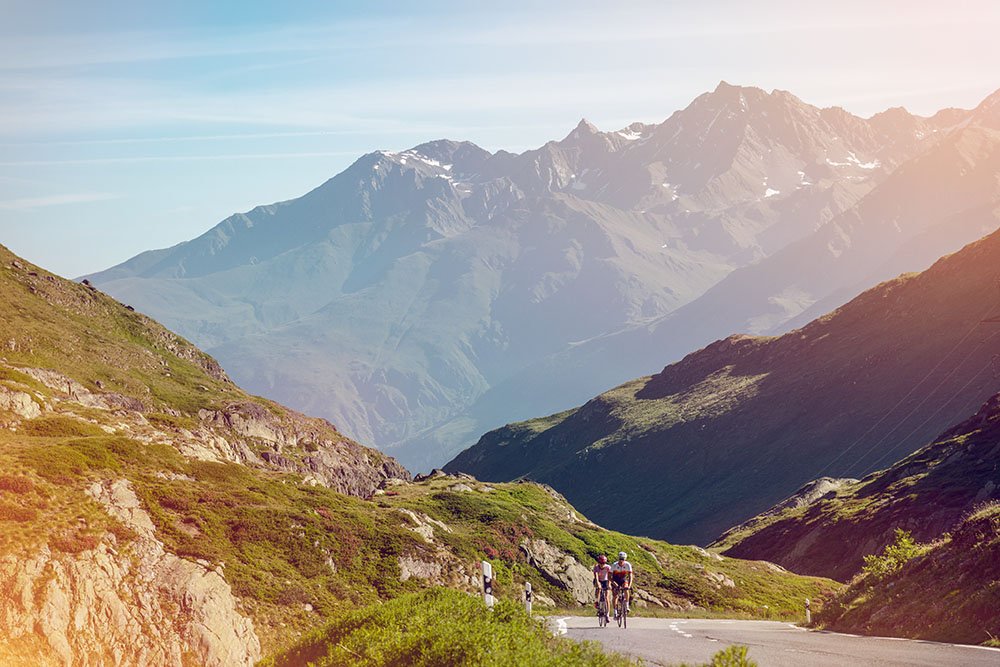
©Valais/Wallis Promotion – David Carlier
CYCLING ROUTES
Valais is full of options when it comes to cycling routes. Warm up with a leisure ride on the Rhone Route, winding its way through mountain scenery, crossing the palm-lined promenades of Lac Léman and the Lavaux vineyards, and ending at cosmopolitan Genève. The route is 320km long and covers contrasting landscapes. It runs mostly downhill, but from Brig to Geneva, the route is almost entirely flat and suitable for leisure cyclists.
Meanwhile, the Vineyard Trail stretches 82km from Martigny to Leuk with an energetic up and down on a sun-kissed southern slope. It takes you through the most uniform wine region of Valais, past small villages and historical municipalities such as Saillon. Valais is characterised by its soils and climatic zones, so along the three-hour ride, have a break in a winery and sample distinctive wines like Petite Arvine, Amigne, Cornalin and Humagne Rouge.
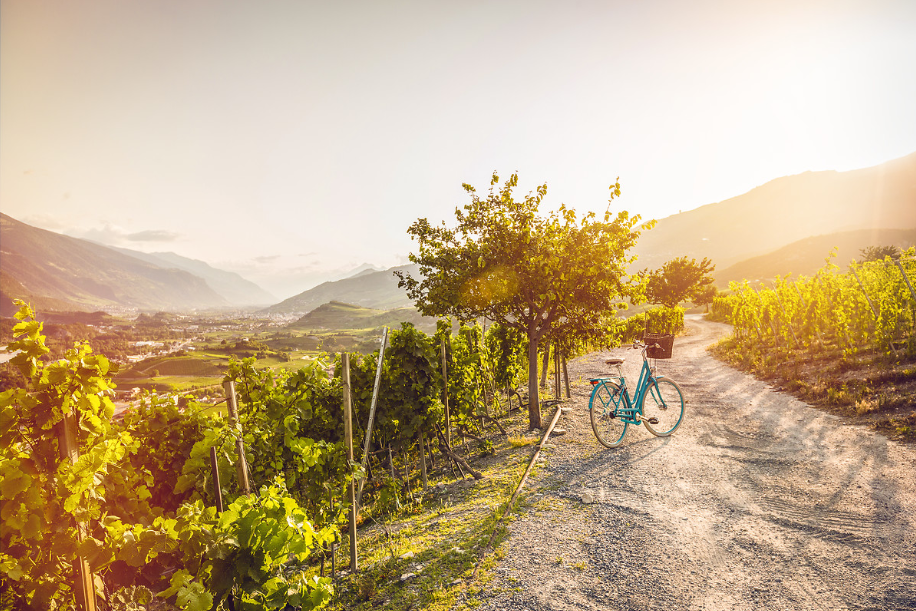
©Valais/Wallis Promotion – Pascal Gertschen
If you’re up for a bigger challenge, which includes 8 ascents, you could test yourself on the Trophy of the Dams. From the village of Aproz, the road climbs towards the Nendaz mountain resort before whisking you into a small valley enclosed by forests until Siviez. The more adventurous should get ready for a bumpy finish. The last kilometres leading to the summit of Cleuson Dam, at more than 2,100 m of altitude, are unpaved. Take a bike that can handle well on a dirt road.
Between the Pennine and Lepontine Alps, Simplon Pass is also worth a visit. The grade is generally steady so you can admire the view of the Rhone Valley. Pedal through alpine meadows with the Wasenhorn and Monte Leone looming overhead. At the summit, stop off to refuel at the pass restaurant and take it all in.
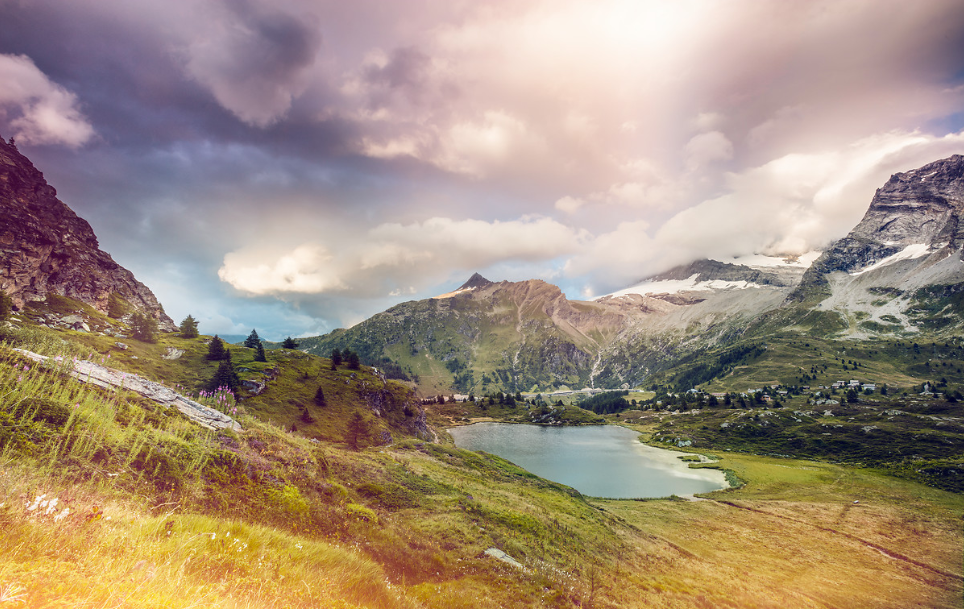
©Valais/Wallis Promotion – Christian Pfammatter
For all routes, we recommend a bike in excellent working order, helmet, gloves and bell, clothing suitable for the weather (always carry a waterproof), food and drink.
RAMP UP THE DIFFICULTY
Want to crank up the difficulty? Valais has hosted three stages of the Tour de France with challenging mountain finishes.
The French cyclist Laurent Fignon triumphed at Crans-Montana in 1984. The Spaniard Alberto Contador came first in the Verbier stage in 2009. And the Russian racer Ilnur Zakarin won the Finhaut-Emosson stage with a spectacular finish at the Emosson Dam in 2016.
See how you measure up on the Tour de France routes with ascents to Verbier and Emosson and along the Crans-Montana sprint.
For a long-distance adventure, you could sign up for the Valais Cycling Tour. Designed by pro cyclist Steve Morabito, the 10-stage route stretches for 740 km over 29 major ascents.
MUST-SEES
Along with cycling routes, Valais presents many attractions to satisfy sightseers. The Aletsch Glacier, made up of 27 billion tons of ice, is the largest glacier in the Alps and part of the UNESCO World Heritage Site. Its easily accessible location makes it ideal for nature excursions, and you’re likely to spot some of the rare animal and plant species that live in the area.
Likewise, the Matterhorn in Zermatt is another can’t-miss destination. The Matterhorn is the famous mountain printed on Toblerone chocolate. On top of being one of the highest summits in the Alps, it’s surrounded by 38 summits over 4,000m high, just the thing for cyclists looking to refine their skills.
Save room in your schedule for the Grande Dixence Dam, the highest gravity dam in the world at a height of 285m. We recommend touring the dam’s interior, which you can visit on request.
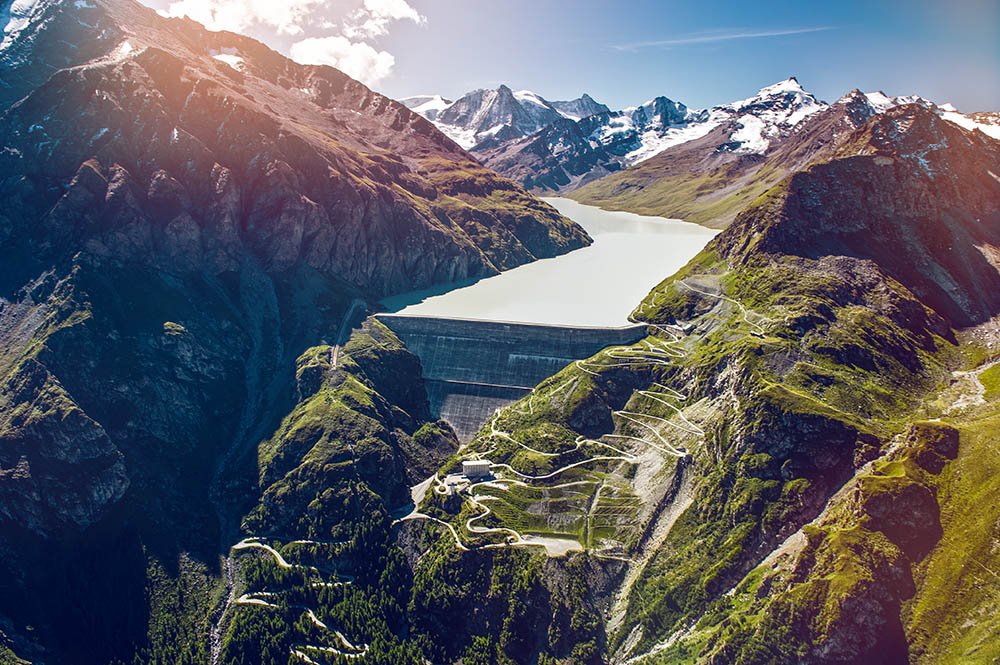
©Valais/Wallis Promotion – Alban Mathieu
FOOD & DRINK
You’re likely to work up an appetite during your Swiss cycling adventures, and Valais delights with a range of Gault & Millau-rated restaurants. Among the traditional local products are Raclette du Valais AOP, the quintessential Valais cheese with a recipe passed down from generations.
Pair it with robust wines bursting with mineral notes, alongside fresh local fruit such as apricots, rye bread, dried meats and rare spices. Fancy bringing some delicacies home? Just pop into one of the charming local shops peppered throughout the region.
GETTING AROUND
Getting around Valais is a breeze. With more than 100 cableways and countless bus and train routes offering bike transport, you can quickly get to where you want to go.
All in all, Valais has a variety of terrain, so don’t hesitate to hire a bike. Road bikes, e-bikes, fat bikes and mountain bikes are available at sports shops across the region, together with high-quality equipment and good service.
ACCOMMODATION
When you’re ready to call it a night, kick up your feet at a bike hotel close to the trails such as Hotel Matthiol. Across Switzerland, hotels have been working hard to improve their facilities for cyclists including a safe place to store your bike and a workshop for repairs.
You can hire a cycling guide to meet you at your hotel and help you find the best routes. You can also download itineraries online with GPX files and level of difficulties, length and duration.
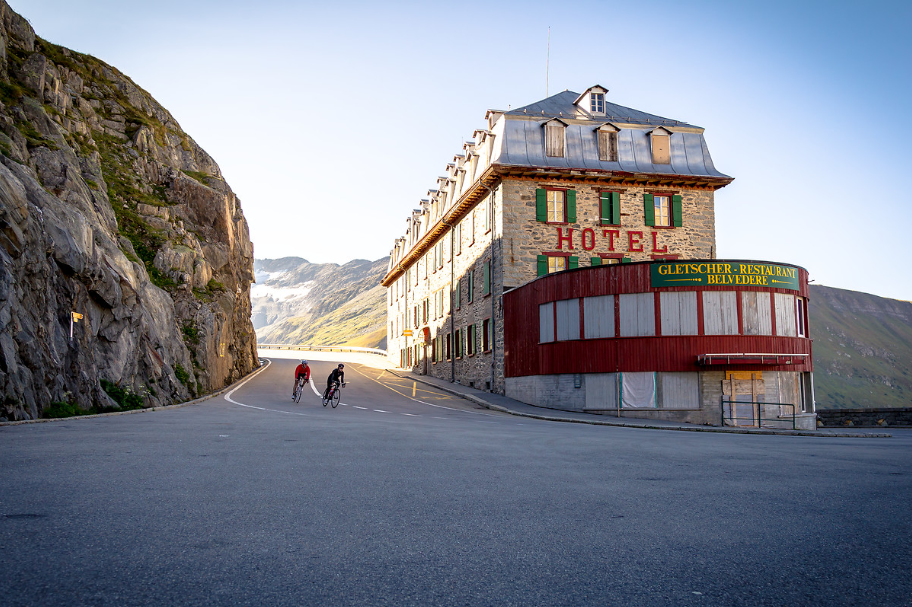
©Valais/Wallis Promotion – Tamara Berger
GETTING THERE
By car, the A9 motorway is the main route leading to Valais. From the north, reach Valais via the Swiss capital and then hopping on the Lötschberg railway tunnel. Starting from the south, take the Simplon Pass or Simplon railway tunnel. From the west, drive via Lausanne. And from the east, via the Furka pass or Furka railway tunnel.
When travelling by air, international flights land in Geneva, Zurich, Basel and Bern. Public transportation links are excellent from there. Direct trains to Valais run from major Swiss cities, including Basel, Bern, Zurich and Geneva. Connections are guaranteed every 30 to 60 minutes, allowing you to transport your bike and easily reach different resorts.
Conveniently, the Easy Card offers 2, 3 or 5-day options and access to public transport from Lake Geneva to the Lötschental valley. In all, you can travel on more than 1.1km of routes at no extra cost. It comes with significant discounts, including 50% off Valais cable cars, certain chairlifts, over 50 activities and attractions, and free public transport from Saint-Ginolph to Blatten and Fafleralp.
Alternatively, the ErlebnisCard grants free travel on public transport and discounts on attractions and excursions. Pick yours up for 2, 3 or 5 days.
WHEN TO VISIT
The best time to go cycling in Switzerland is from May to October. Some of the pass routes only open in June, depending on snow conditions. Before heading out, double check your itinerary and road openings.
And don’t stress if you can’t make it this year. The 2020 Road Cycling World Championships will roll into Switzerland and parts of Valais. Particularly, the districts of Martigny, along with Aigle, will welcome the world’s top cyclists.
PLAN YOUR TRIP
Ready to go cycling in Switzerland? Match Valais’ cycling routes to your performance by visiting the Valais cycling website and save a few quid on these cycling offers.
Need cover while enjoying your travels? Cycle worry-free with our bicycle insurance and cycle travel insurance, available as short-term or annual policies.